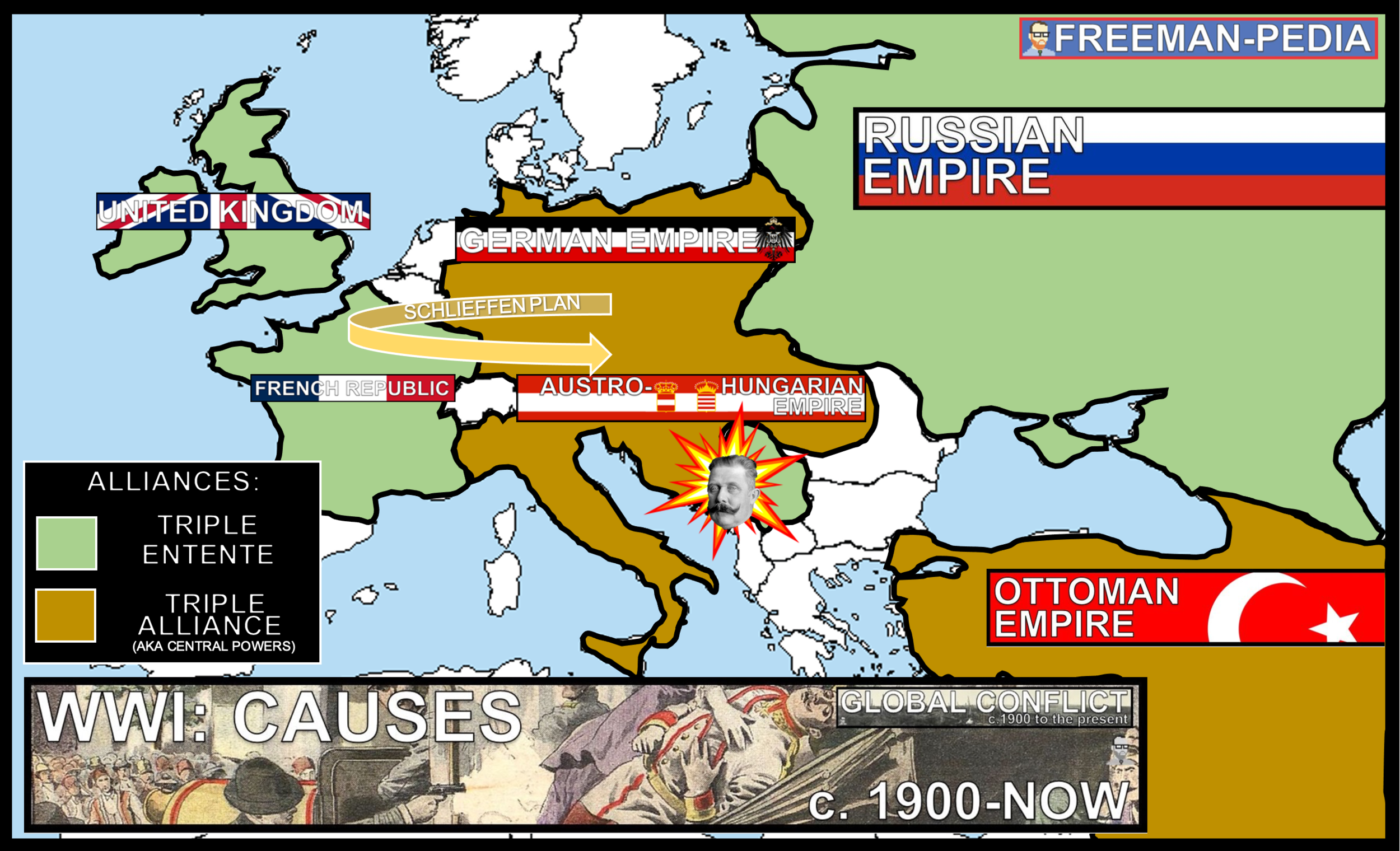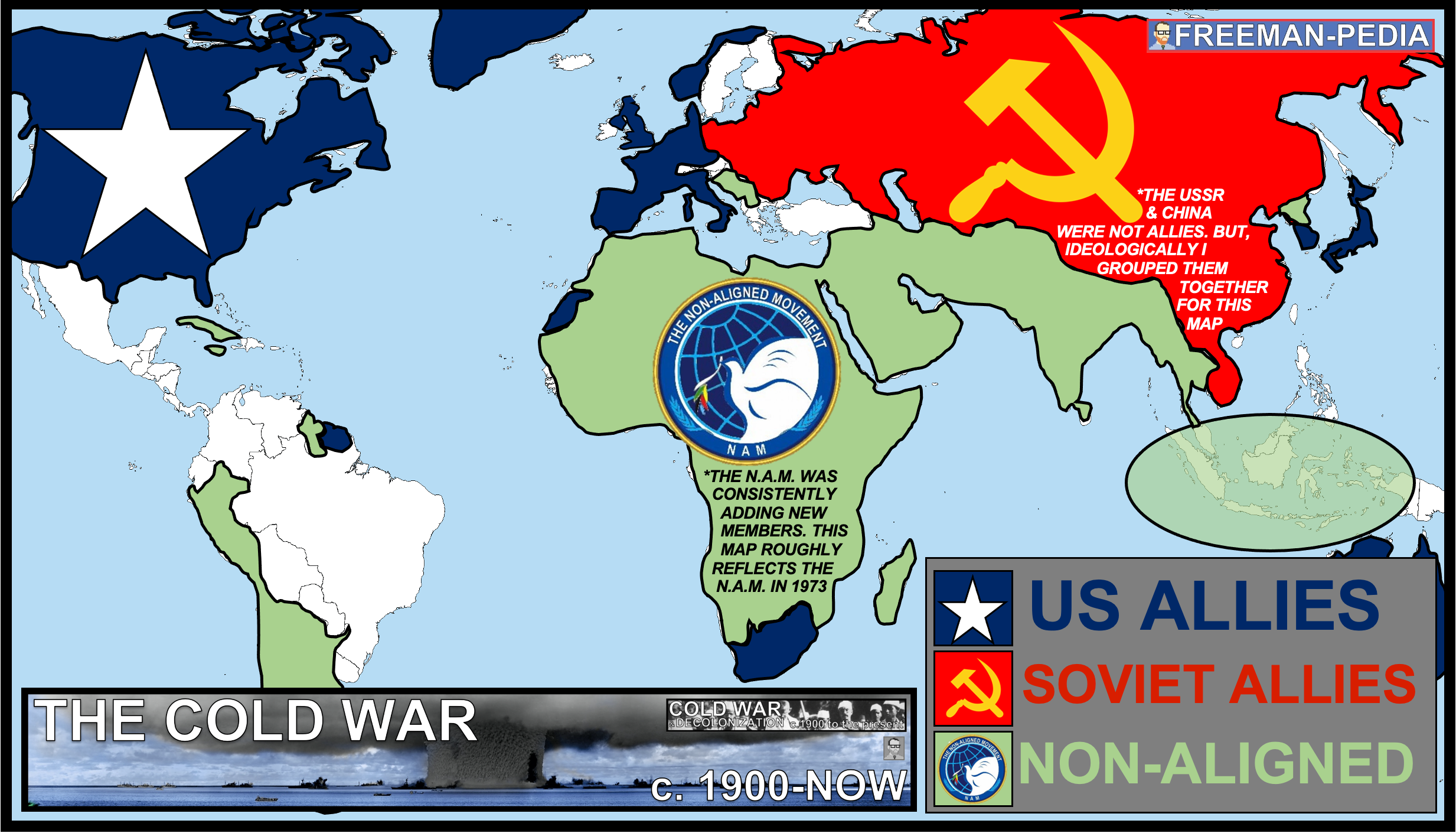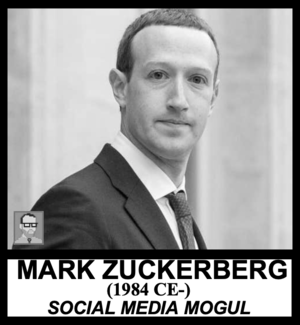Well... well... well. Look at you. You made it! The FINAL ERA! The era you were born in! 1900-Present. The 20th Century is full of so much historical stuff that you need to know that I won't bog you down with some long intro. It basically breaks into three units:
CLICK BELOW for pages dedicated to the THREE UNITS in this PERIOD.
Below are the ACTUAL STANDARDS provided by the College Board for what you have to know for the 1900-Present Period:
Rapid advances in science and technology altered the understanding of the universe and the natural world and led to advances in communication, transportation, industry, agriculture, and medicine.
New modes of communication—including radio communication, cellular communication, and the internet—as well as transportation, including air travel and shipping containers, reduced the problem of geographic distance.
The Green Revolution and commercial agriculture increased productivity and sustained the earth’s growing population as it spread chemically and genetically modified forms of agriculture.
Medical innovations, such as vaccines and antibiotics, increased the ability of humans to survive and live longer lives.
Energy technologies, including the use of petroleum and nuclear power, raised productivity and increased the production of material goods.
As human activity contributed to deforestation, desertification, a decline in air quality, and increased consumption of the world’s supply of fresh water and clean air, humans competed over these and other resources more intensely than ever before.
The release of greenhouse gases and pollutants into the atmosphere contributed to debates about the nature and causes of climate change.
Diseases, as well as medical and scientific developments, had significant effects on populations around the world.
Diseases associated with poverty persisted, while other diseases emerged as new epidemics and threats to human populations, in some cases leading to social disruption. These outbreaks spurred technological and medical advances. Some diseases occurred at higher incidence merely because of increased longevity.
More effective forms of birth control gave women greater control over fertility transformed reproductive practices, and contributed to declining rates of fertility in much of the world.
New military technology led to increased levels of wartime casualties.
New military technology and new tactics, including the atomic bomb, firebombing, and the waging of “total war” led to increased levels of wartime casualties.
Peoples and states around the world challenged the existing political and social order in varying ways, leading to unprecedented worldwide conflicts.
The West dominated the global political order at the beginning of the 20th century, but both land-based and maritime empires gave way to new states by the century’s end.
As a result of internal tension and Japanese aggression, Chinese communists seized power. These changes in China eventually led to communist revolution.
The older, land-based Ottoman, Russian, and Qing empires collapsed due to a combination of internal and external factors. These changes in Russia eventually led to communist revolution.
Between the two world wars, European imperial states often maintained control over their colonies; in some cases gained additional territories through conquest or treaty settlement and in other cases faced anti-imperial resistance.
After the end of World War II, some colonies negotiated their independence…
… while other colonies achieved independence through armed struggle.
Hopes for greater self-government were largely unfulfilled following World War I; however, in the years following World War II, increasing anti-imperialist sentiment contributed to the dissolution of empires and the restructuring of states.
Nationalist leaders and parties in Asia and Africa sought varying degrees of autonomy within or independence from imperial rule.
Regional, religious, and ethnic movements challenged colonial rule and inherited imperial boundaries. Some of these movements advocated for autonomy.
States around the world challenged the existing political and social order, including the Mexican Revolution that arose as a result of political crisis.
Movements to redistribute land and resources developed within states in Africa, Asia, and Latin America, sometimes advocating communism or socialism.
The redrawing of political boundaries after the withdrawal of former colonial authorities led to the creation of new states.
The redrawing of political boundaries in some cases led to conflict as well as population displacement and/or resettlements, including those related to the Partition of India and the creation of the state of Israel.
The migration of former colonial subjects to imperial metropoles (the former colonizing country), usually in major cities, maintained cultural and economic ties between the colony and the metropole even after the dissolution of empires.
The rise of extremist groups in power led to the attempted destruction of specific populations, notably the Nazi killing of the Jews in the Holocaust during World War II, and to other atrocities, acts of genocide, or ethnic violence.
World War I was the first total war. Governments used a variety of strategies, including political propaganda, art, media, and intensified forms of nationalism, to mobilize populations (both in the home countries and the colonies) for the purpose of waging war. \
World War II was a total war. Governments used a variety of strategies, including political propaganda, art, media, and intensified forms of nationalism, to mobilize populations (both in the home countries and the colonies or former colonies) for the purpose of waging war. Governments used ideologies, including fascism and communism to mobilize all of their state’s resources for war and, in the case of totalitarian states, to repress basic freedoms and dominate many aspects of daily life during the course of the conflicts and beyond.
The causes of World War I included imperialist expansion and competition for resources. In addition, territorial and regional conflicts combined with a flawed alliance system and intense nationalism to escalate the tensions into global conflict.
The causes of World War II included the unsustainable peace settlement after World War I, the global economic crisis engendered by the Great Depression, continued imperialist aspirations, and especially the rise to power of fascist and totalitarian regimes that resulted in the aggressive militarism of Nazi Germany under Adolf Hitler.
The Cold War conflict extended beyond its basic ideological origins to have profound effects on economic, political, social, and cultural aspects of global events.
Technological and economic gains experienced during World War II by the victorious nations shifted the global balance of power.
The global balance of economic and political power shifted during and after World War II and rapidly evolved into the Cold War. The democracy of the United States and the authoritarian communist Soviet Union emerged as superpowers, which led to ideological conflict and a power struggle between capitalism and communism across the globe.
The Cold War produced new military alliances, including NATO and the Warsaw Pact, and led to nuclear proliferation and proxy wars between and within postcolonial states in Latin America, Africa, and Asia.
Advances in U.S. military and technological development, the Soviet Union’s costly and ultimately failed invasion of Afghanistan, and public discontent and economic weakness in communist countries led to the end of the Cold War and the collapse of the Soviet Union.
Although conflict dominated much of the 20th century, many individuals and groups—including states—opposed this trend. Some individuals and groups, however, intensified the conflicts.
Groups and individuals challenged the many wars of the century, and some, such as Mohandas Gandhi, Martin Luther King Jr., and Nelson Mandela, promoted the practice of nonviolence as a way to bring about political change.
Groups and individuals, including the Non-Aligned Movement, opposed and promoted alternatives to the existing economic, political, and social orders.
Militaries and militarized states often responded to the proliferation of conflicts in ways that further intensified conflict.
Some movements used violence against civilians to achieve political aims.
The role of the state in the domestic economy varied, and new institutions of global association emerged and continued to develop throughout the century.
States responded in a variety of ways to the economic challenges of the 20th century.
In the Soviet Union, the government controlled the national economy through the Five Year Plans, often implementing repressive policies, with negative repercussions for the population.
In communist China, the government controlled the national economy through the Great Leap Forward, often implementing repressive policies, with negative repercussions for the population.
Following World War I and the onset of the Great Depression, governments began to take a more active role in economic life.
In newly independent states after World War II, governments often took on a strong role in guiding economic life to promote development.
In a trend accelerated by the end of the Cold War, many governments encouraged free-market economic policies and promoted economic liberalization in the late 20th century.
In the late 20th century, revolutions in information and communications technology led to the growth of knowledge economies in some regions, while industrial production and manufacturing were increasingly situated in Asia and Latin America.
New international organizations, including the United Nations, formed with the stated goal of maintaining world peace and facilitating international cooperation.
Changing economic institutions, multinational corporations, and regional trade agreements reflected the spread of principles and practices associated with free-market economics throughout the world.
Movements throughout the world protested the inequality of the environmental and economic consequences of global integration.
Rights-based discourses challenged old assumptions about race, class, gender, and religion.
In much of the world, access to education as well as participation in new political and professional roles became more inclusive in terms of race, class, gender, and religion.
Political and social changes of the 20th century led to changes in the arts and in the second half of the century, popular and consumer culture became more global.
Arts, entertainment, and popular culture increasingly reflected the influence of a globalized society.
Consumer culture became globalized and transcended national borders.
Responses to rising cultural and economic globalization took a variety of forms.
WARNING: There are more people to know in the CONTEMPORARY PERIOD (1900-Present) than any other period. It includes 76 people. And, yes. That does include two dogs, because dogs are people.











































































































